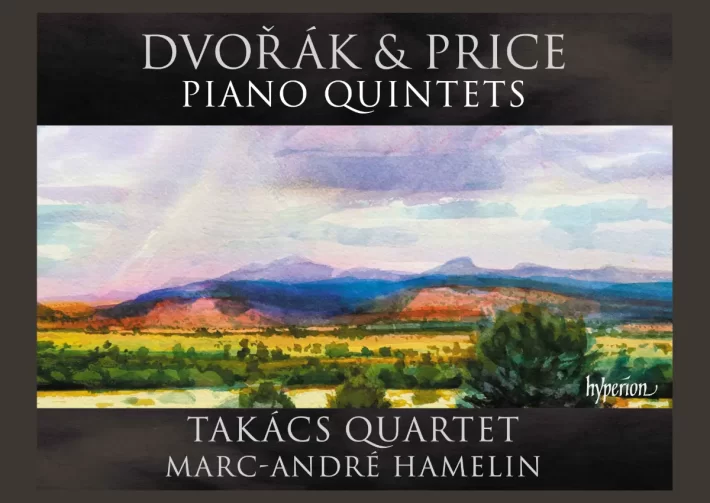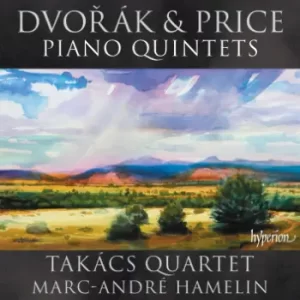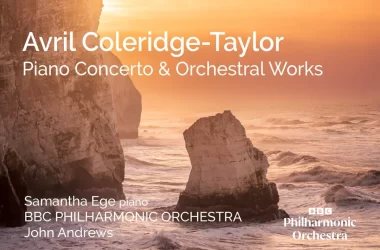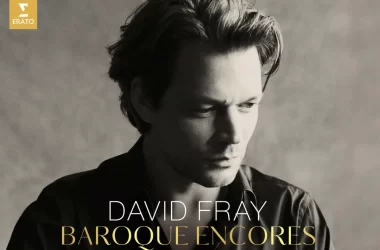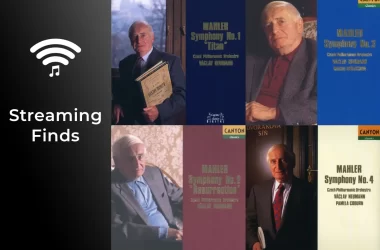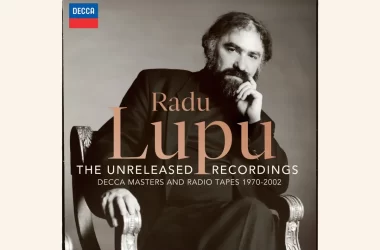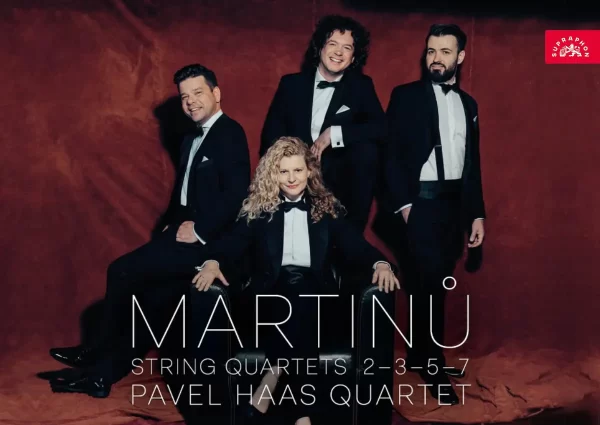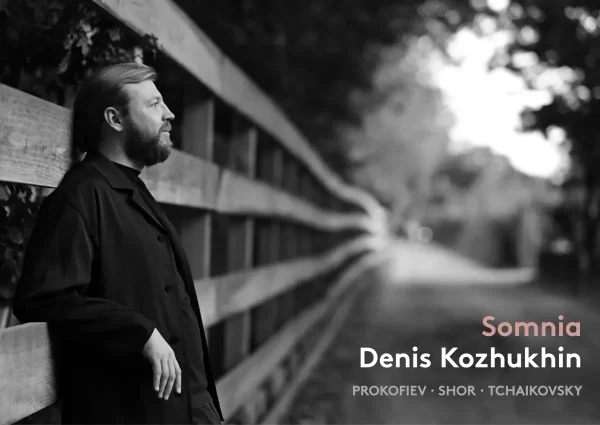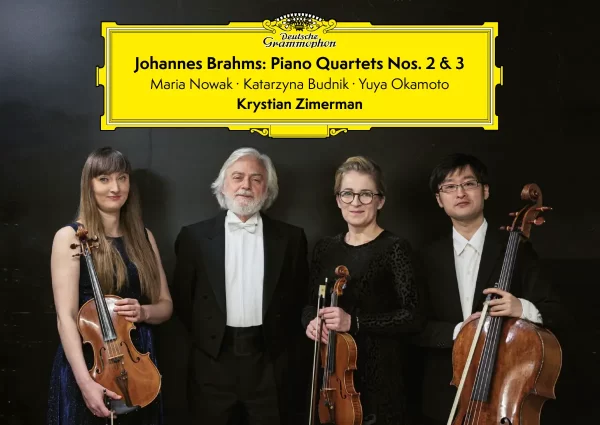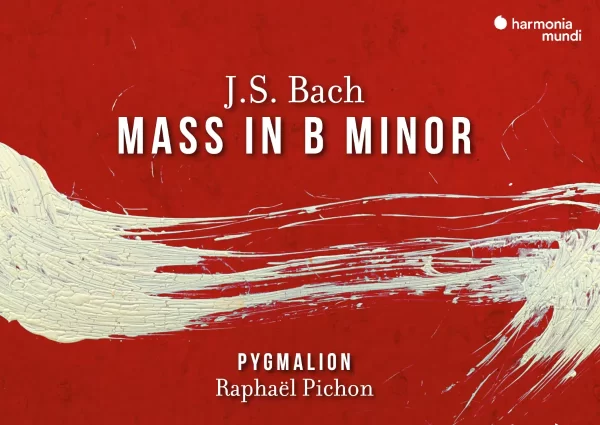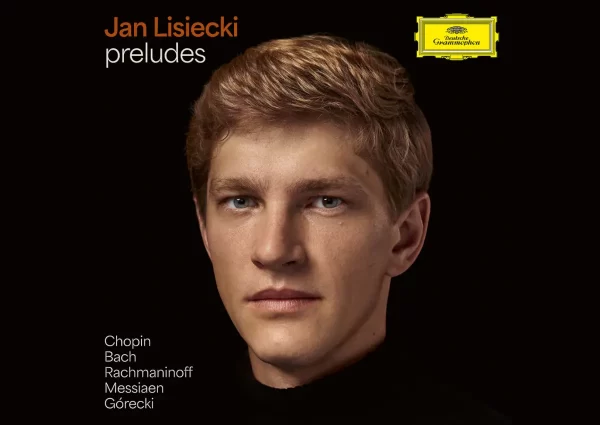The Takács Quartet, in collaboration with pianist Marc-André Hamelin, presents an intriguing pairing of quintets by Antonín Dvořák and Florence Price. A closer look at Dvořák’s three years in the US as a conservatory director proves illuminating in understanding the connection between these two composers: fascinated by the folk traditions of the African-American community, Dvořák listened to plantation melodies whose influences later found their way into works like the “New World” Symphony and the Op. 96 “American” String Quartet. Florence Price, herself African-American, drew inspiration from Dvořák’s compositional style and incorporated similar melodies and motifs in both her instrumental and vocal works.
The Dvořák quintet featured here was actually completed prior to his time in the US. Nonetheless, the work reflects folk influences closer to home, notably the Ukrainian dumka. The cello sets the stage by presenting the signature melody of the Allegro (track 5). Out of comparative curiosity, I listened to two additional recordings: the Emerson Quartet with Menahem Pressler and another by the Pavel Haas Quartet with Boris Giltburg. Although all capture the beautiful fluidity of this line, their interpretations differ significantly. András Fejér, the Takács cellist, sounds the most even-keeled yet conveys a sense of nobility. Pavel Haas Quartet’s Peter Jarůšek approaches the melody with subtlety, akin to a lullaby. The most convincing reading, though, comes from David Finckel, the Emerson Quartet’s cellist. Here, his pronounced vibrato and deeply warm tone lend a personal touch that resonates immediately.
The defining characteristic of the Allegro is its stark alternation between pastoral and stormy, which the musicians convey effectively. Transitioning between calm and charged moments is always tricky in terms of timing and suspense, but the element of subito surprise remains vivid throughout.
The second movement—the Dumka—is superbly realized: Hamelin’s handling of the recurring rhythmic motif, paired with a crystalline tone, evokes a delicately ringing bell. This ephemeral, fragile quality complements the cello’s comforting warmth and the other strings’ wistful melancholy. The buildup to the movement’s climax at 6’39” is convincingly executed, and when the theme returns at this juncture, the players embrace its desperate passion. The previously gentle melody takes on a significantly stormier character, yet never crosses into harshness or instability.
The most spirited movement is the Allegro (track 8), with the first and second violins central to its drive. Beyond adept bowing and articulation, there’s a welcome touch of dryness, allowing each note to clearly penetrate the sonic landscape. The only minor drawback is that the piano does not quite follow suit, with some passages somewhat over-pedaled. Nevertheless, Hamelin’s refined sound quality remains evident even in accompanimental textures, lending a luminous shimmer to the section beginning at 1’15”, as the strings evoke the anticipation and optimism intrinsic to the movement.
Florence Price’s Quintet feels somewhat more exploratory in its musical influences. The pentatonic main theme of the Allegro (track 1) clearly traces back to similar patterns found in plantation melodies, and the second C-major theme has an unmistakable jazz inflection. Between these themes lies a wealth of complex, forward-thinking harmonies reminiscent of Impressionist or Neo-Romantic music. Drama and rhapsody are the dominant qualities here, well emphasized by the performers. Their attention to the kaleidoscopic colors and phrasal contours of Price’s music is noteworthy. If anything, the interpretation could benefit from a more spontaneous feel in the lyrical sections.
Dvořák’s influence manifests less in the actual musical material than in Price’s structural choices. Where the Dumka was Dvořák’s nod to tradition, Price opts for a juba, a dance performed by plantation workers. The dance’s vibrancy comes across delightfully, particularly in the violins: the syncopated rhythms are lively, and the pizzicatos appropriately crisp. Overall, what stands out is the synchronicity in a rhythmically intricate movement, as well as the playful spirit of the juba. In the Finale, the exchanges of signature triplets occur seamlessly, with the bowing meticulously even. The musicians adeptly highlight the gentle dreaminess of the major sections, treating them with equal care as the robustness of the minor passages.
The accompanying liner notes prove notably helpful, offering detailed musical analyses and an exploration of the connection between the two composers. With its balanced and natural engineering, this album delivers mostly successful and imaginative renditions of each quintet.
Recommended Comparisons (Dvořák):
Emmerson Quartet | Pavel Haas Quartet | Guarneri Quartet | Borodin Quartet

Sign up to The Classic Review newsletter and get new classical music reviews and guides directly to your inbox.
Album Details |
|
|---|---|
| Album name | Dvořák & Price – Piano Quintet |
| Label | Hyperion |
| Catalogue No. | CDA68433 |
| Artists | Takács Quartet, Marc-André Hamelin |
Included with an Apple Music subscription:
Latest Classical Music Posts

